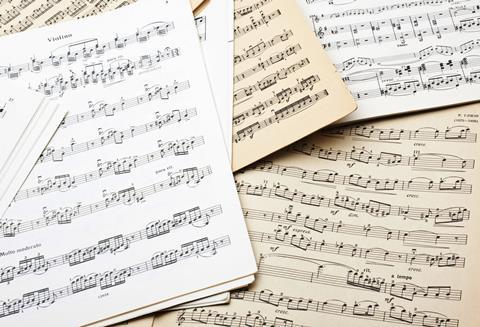With the growth in popularity of group instrumental lessons, it’s never been more important to match the music to the pupil says cellist, composer and teacher Thomas Gregory

Discover more Featured Stories like this in The Strad Playing Hub
Read more premium content for subscribers here
Whole-class instrumental lessons have forced a change in the way we teach that benefits both teacher and pupil alike. When I started teaching several decades ago, I remember having certain expectations based on prejudices I’d acquired, possibly from my own experience as a young pupil.
I remember believing that the early years of an instrumentalist’s development were predominantly concerned with technique: learning how to bow, place the fingers, read music and so on. To acquire these skills, it was necessary to work through a well-trodden path of functional but not particularly interesting repertoire – a dullish period of honing skills in order to develop the facility needed to tackle more attractive music some time in the distant future, when one was technically ‘good enough’.
There might have been a time when a pupil would dutifully follow instructions from their teacher, no matter how dull, but that was certainly not the case when I started teaching. Getting the children to sit in their seats was enough of a challenge. Persuading them to apply effort to learn a piece that didn’t interest them was an arduous and ultimately fruitless task. It became immediately clear to me that the motivation to play would have to come from the music itself. Matching the music to the pupil was what was required, not the other way round.
Children have to want to play the music in front of them
As any self-help book would tell us, the journey matters more than the destination. When it comes to music, nothing could be truer. As an adult, my playing is motivated by the repertoire I want to learn, so why should it be any different for children? With the advent of whole-class instrumental teaching, the role that the material we use has become critical. While games and supplementary activities form a useful part of lessons, it is the repertoire that ultimately provides the motivation to practise at home, especially if parental support is not guaranteed. If a class is not motivated by the music, a teacher is required to use other means, such as bargaining or bribery, neither of which lead to a better outcome. If we are teaching music, there is only one fruitful option, and that is to motivate through choice of repertoire.
As in any team sport, music really only comes alive for children when they are playing among friends. The shared experience and struggle is highly motivating because the focus is on the collective goal. The big advantage of whole-class lessons is that this collective experience is enjoyed from the very beginning. The pleasure is in the present, and progress is assured. A skilled teacher will use this advantage gently to encourage a good technical approach without necessarily needing to compromise any enjoyment with mundane attention to detail.
With individuals who have parental support at home and practise regularly, it is possible to see steady progress without necessarily paying much attention to repertoire. A dutiful student will fulfil their set tasks without complaining. However, it is worth remembering that, as teachers, we are not only teaching technique; we are nurturing a love of the medium, and that has to come from the experience of playing music that is loved. Too many years dutifully playing music with which there is no emotional bond has lasting implications for a student’s relationship with music. This is something teachers should be mindful of.
In whole-class instrumental lessons the journey has to be the motivating force, otherwise children simply won’t engage. They have to want to play the music in front of them for the sake of it. This is good for teaching as it again reinforces the need to seek out repertoire that makes for a truly engaging approach. Coercion is no longer an option. What matters is the journey. You never know where the path leads, but if it’s no longer fun, you’ve gone the wrong way.
Read: Opinion: The benefits of rest for students
Read: Opinion: The importance (and difficulty) of playing softly
Discover more Featured Stories like this in The Strad Playing Hub
Read more premium content for subscribers here
The number one source for playing and teaching books, guides, CDs, calendars and back issues of the magazine.
In The Best of Technique you’ll discover the top playing tips of the world’s leading string players and teachers. It’s packed full of exercises for students, plus examples from the standard repertoire to show you how to integrate the technique into your playing.
The Strad’s Masterclass series brings together the finest string players with some of the greatest string works ever written. Always one of our most popular sections, Masterclass has been an invaluable aid to aspiring soloists, chamber musicians and string teachers since the 1990s.
American collector David L. Fulton amassed one of the 20th century’s finest collections of stringed instruments. This year’s calendar pays tribute to some of these priceless treasures, including Yehudi Menuhin’s celebrated ‘Lord Wilton’ Guarneri, the Carlo Bergonzi once played by Fritz Kreisler, and four instruments by Antonio Stradivari.

























































No comments yet